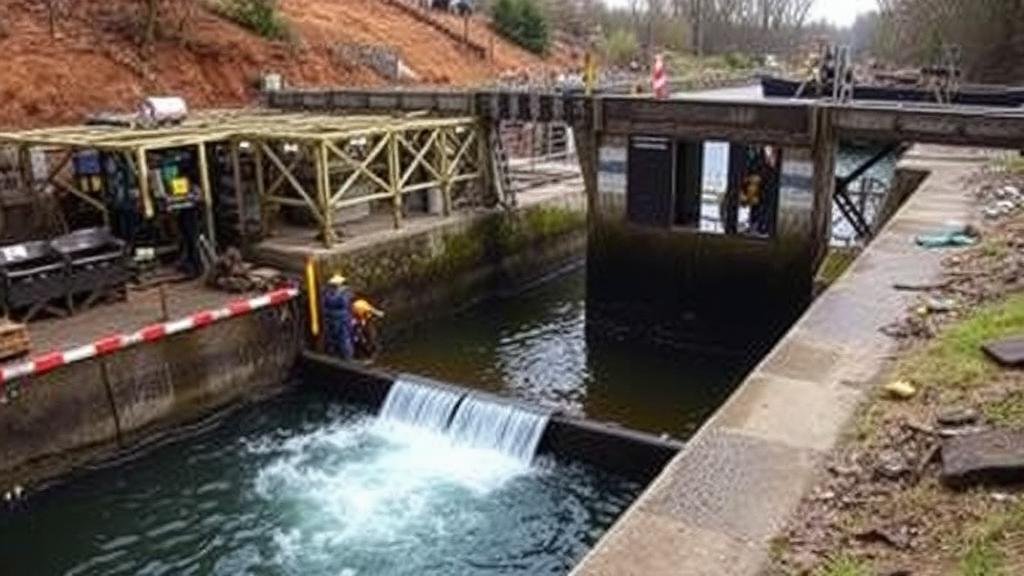Mining Disused Canal Locks for Waterway Engineering Artifacts
Mining Disused Canal Locks for Waterway Engineering Artifacts
The study of disused canal locks serves as a significant entry point into the broader field of waterway engineering and historical preservation. By examining the engineering artifacts found in these structures, researchers can gain invaluable insights into historical construction techniques, the evolution of water management technologies, and the socio-economic impacts of inland navigation systems. This article explores the methodologies and ethical considerations surrounding the mining of these artifacts, highlighting relevant case studies and proposing avenues for future research.
History of Canal Locks and Their Importance
Canal locks have played a crucial role in the development of inland waterway transport, facilitating movement through varying elevations and improving the efficiency of trade. first modern canal lock, the Staircase Locks, was built at the Forth and Clyde Canal in Scotland in 1777. This innovation allowed ships to navigate through complex terrains and contributed significantly to the industrial revolution.
Statistics from the National Waterways Network indicate that over 11,000 miles of navigable waterways in the United States, primarily facilitated by locks, have greatly supported economic activities since their inception in the 18th century. These structures not only reflect engineering prowess but also embody economic and social transformations over time.
Methodologies for Artifact Mining
Mining disused canal locks for artifacts involves methodological approaches that are both systematic and respectful of historical integrity. Archaeologists and engineers employ the following techniques:
- Surveying and Mapping: Before excavation, comprehensive surveys are conducted using Geographic Information System (GIS) technology to create detailed maps of the area.
- Excavation Techniques: Excavations are performed cautiously using hand tools to minimize damage to the artifacts and surroundings.
- Artifact Analysis: Once artifacts are recovered, they are analyzed regarding their material composition, functionality, and historical context.
Each of these approaches aims to ensure the reliable documentation of finds while minimizing the potential for disturbing the archaeological context.
Case Studies: Successful Mining Expeditions
Numerous successful excavations have bolstered both the historical narrative of canals and the engineering methodologies employed. One notable case is the excavation of the Chichester Canal in West Sussex, England, where artifacts dating back to the late 18th century were discovered. These artifacts, including wooden and metal fittings, provided critical insights into the design and operation of canal systems during that period.
In the United States, the Erie Canal, which opened in 1825, has yielded significant artifacts, including original lock components, that have been essential in understanding early American engineering practices. Studies conducted by the New York State Canal Corporation have documented these findings, outlining the lock designs and the evolution of materials used in their construction.
Ethical Considerations in Artifact Mining
The mining of artifacts from disused canal locks raises important ethical considerations. Archaeologists must navigate legal frameworks surrounding ownership and preservation while ensuring that their work contributes positively to the communitys cultural heritage. For example, all excavations should secure necessary permits and engage with local historical societies to promote public interest and education.
Also, conservation of the artifacts must be prioritized, as many may be at risk of deterioration. Collaboration with conservationists is essential to ensure that recovered items are appropriately restored and preserved for future generations.
Real-World Applications and Future Research
The insights gained from mining canal locks extend beyond historical understanding; they have practical applications in contemporary waterway engineering. For example, analyzing the functionality and designs of historical locks can inform modern engineering practices, leading to more efficient and sustainable water management systems.
Future research could explore the following areas:
- Comparative studies of lock designs across different regions and time periods.
- The impact of local economies on the design and maintenance of canal systems.
- Advanced technologies for underwater surveying and artifact recovery.
Conclusion
Mining disused canal locks for waterway engineering artifacts represents a fusion of archaeology, engineering, and historical scholarship. By employing systematic methodologies and respecting ethical considerations, researchers can unlock a wealth of knowledge that informs both our understanding of the past and our approach to contemporary waterway challenges. case studies presented highlight the richness of data that can be garnered, advocating for an increased focus on this vital aspect of cultural heritage preservation.



